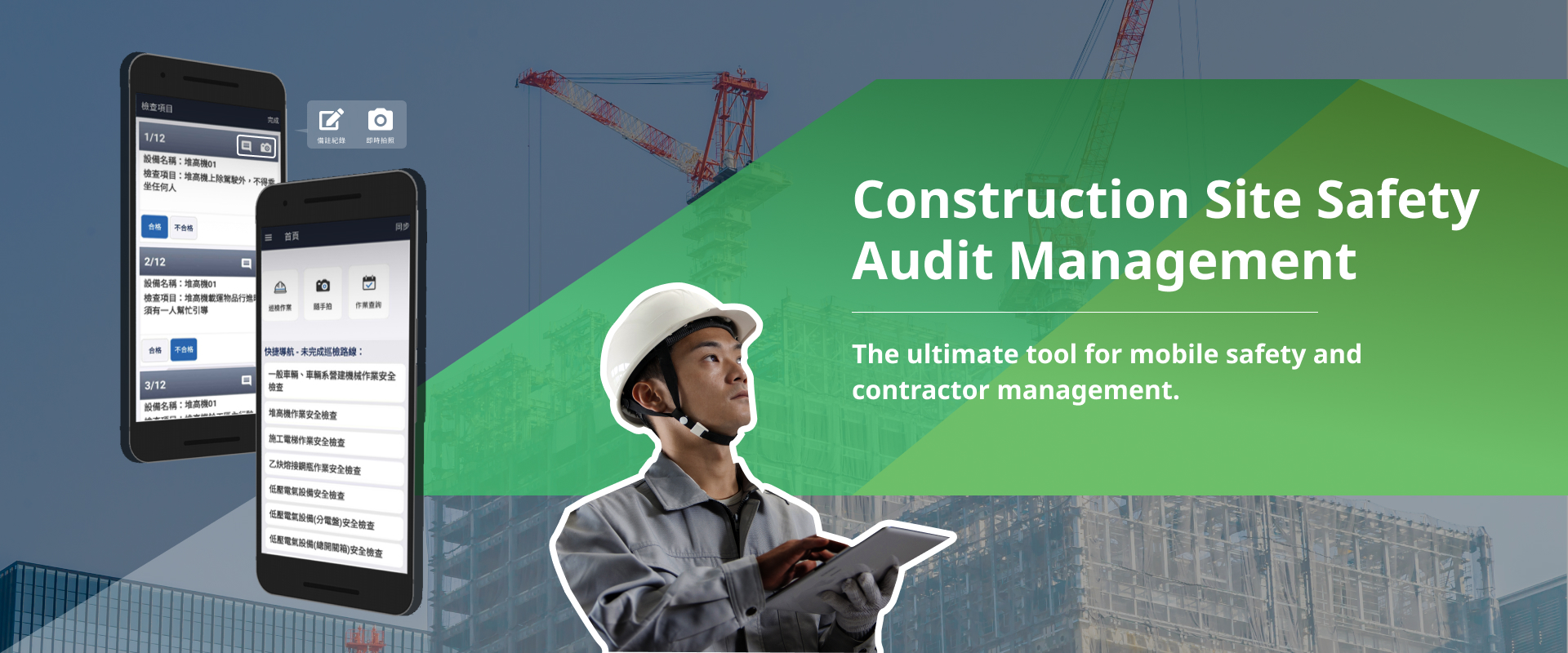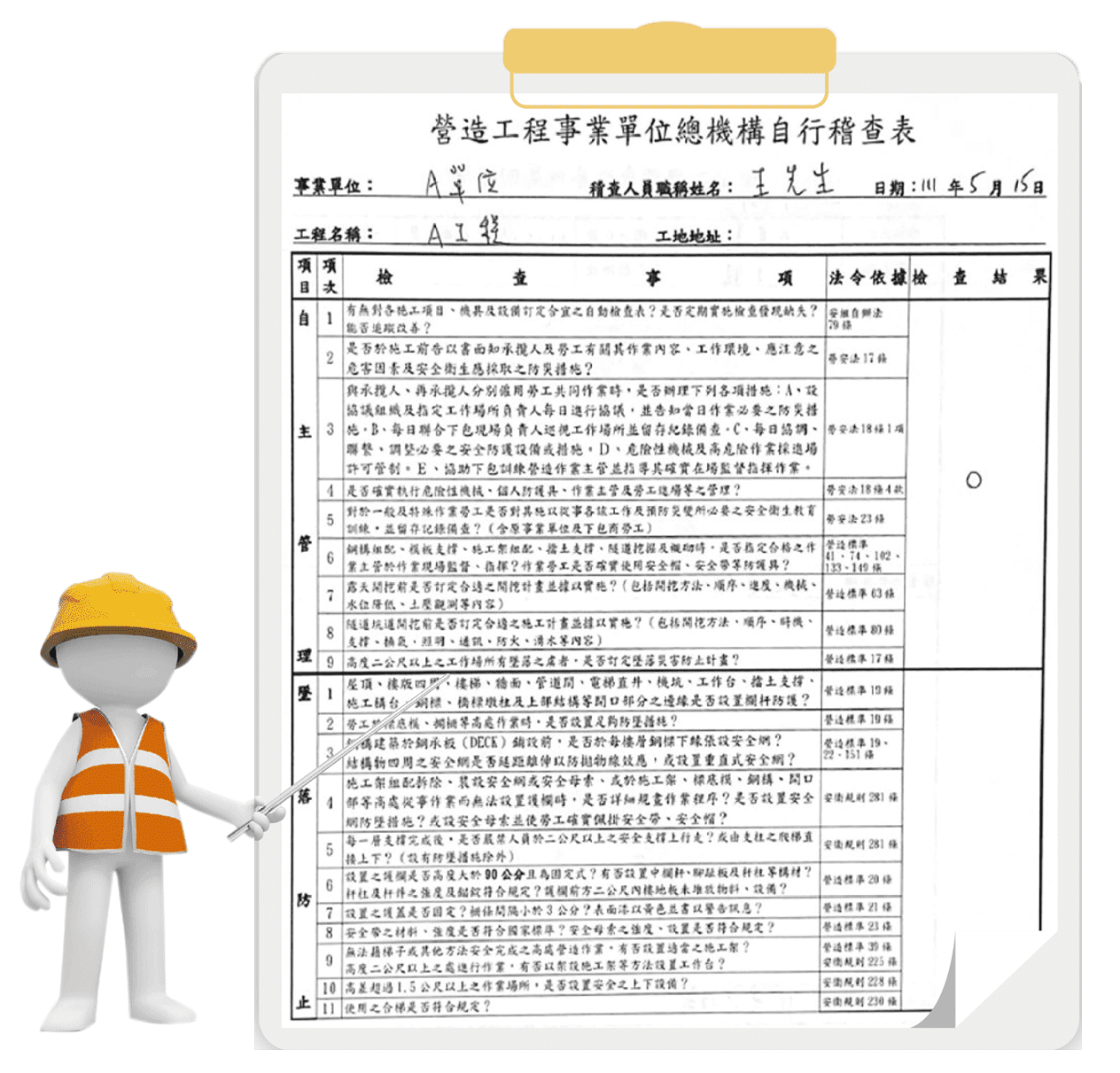- Construction Site Safety Audit Management
- How To Help Businesses
- Digitization
- Optimization
- Transformation
How To Help Businesses
In recent years, the government has invested significant efforts in preventing safety accidents, including initiatives such as education and training, regular safety measures, and quality assurance audits. Government agencies and project owners have also imposed regulations and inspections on construction companies related to labor safety and health. Strategies like promoting occupational accident maps aim to achieve "zero accidents, zero fatalities" on all construction projects in the country.While it's not always possible to avoid accidents on significant construction projects, the impact of each incident on businesses cannot be underestimated. As a result, whether due to self-imposed constraints by construction companies, requirements from regulatory authorities and project owners, or the need to safeguard the lives of workers, there is immense pressure on construction companies to enforce safety policies and systems rigorously.
Construction Site Safety Audit Management
Traditional Operations: In the construction industry, various audit forms are used to comply with the content of occupational safety and health management regulations. How do you manage them? Do you fill them out on paper? Scan and archive them? Input data into purely electronic forms? Is it challenging to retrieve the data when needed?
Zero accidents, zero fatalities
Electronic data storage and information
Implementing improvements based on deficiencies
Actionable reporting for improvements

The system's back end provides an easy-to-use interface for clients to manage essential contractor data independently. This includes site supervisors, occupational safety personnel, approved subcontractor companies, entry personnel, occupational safety certifications, and safety education training.
It offers a comprehensive solution for managing non-compliance incidents, integrating them into the PDCA (Plan-Do-Check-Act) management cycle. For instance, users can capture photos of deficiencies and improvements using mobile devices like tablets and smartphones, digitize and upload the data, and send notifications to relevant supervisors.
The system combines three levels of occupational safety audits (labor inspection authorities/employers, supervisory units/head offices, and construction sites or factory ends) with ISO 45001 standards. This establishes a mobile reporting system for non-compliance, anomalies, and improvements.
The platform lets clients access various safety deficiency and improvement reports online. Users can apply this information to create company safety performance indicator reports, covering aspects such as ISO 45001 internal audits, annual disaster incident statistics and analysis, safety deficiency statistics, and more.
- User-Friendly Operation: Easily generate comprehensive audit reports in one go using the digital handheld front end app, eliminating the need for time-consuming data consolidation via computers.
- Precise Data Management: Combine digital dashboards to thoroughly understand deficiency types and quantities among various contractors, focusing on targeted improvements.
- Real-Time Notifications: The system promptly sends contractor audit report notifications, effectively reducing risks and penalties caused by overdue improvements.
- Embedding Audit Standards: Incorporate audit standards into the system architecture to ensure safety inspections meet established criteria.
- Streamlined Report Generation: Solve the time-consuming manual consolidation of audit reports by using smart handheld devices for one-step report creation, saving time and effort.
- Data Integrity Enhancement: Improve record security by using handheld devices for data input, mitigating the risk of unauthorized alterations.
- Statistical Report Generation via Information System: Utilize the information system to generate management reports, reducing errors associated with paper-based and manual processes and enhancing report credibility.
- Mobile Safety Audit Management System: Comprising a front end mobile device module (compatible with Android smartphones, tablets, Windows tablets, and web browsers), back end management module, query operations, and electronic signature support.
- Provides 1 Sample Template: Offers a sample template for contractor entry management procedures or self-inspection forms for construction industry units.
- Offers 7 Standard Report Templates.
- Hardware Requirements: Server (DMZ) or cloud-based infrastructure, personal computers, Android smartphones and tablets, and Windows tablets.
- Optional Add-Ons: BI module, front end mobile device module (compatible with iOS).
Relevant companies or units that comply with the Occupational Safety and Health Act, including industries such as petrochemicals, construction, healthcare institutions, and schools from high school level and above.







